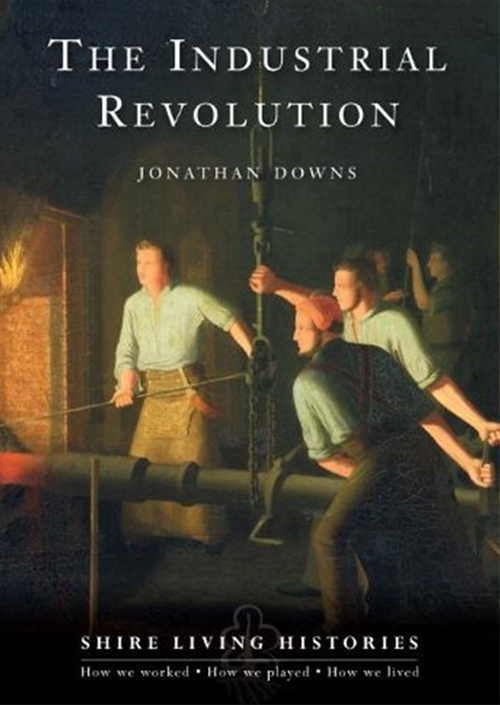The Industrial Revolution, Britain, 1770-1810
Review

The Industrial Revolution, Britain, 1770-1810, Jonathan Downs Shire Living Histories, 2010, paperback, 88 pp, £8.99, ISBN 9780747807810
This brief study of Britain's Industrial Revolution during the forty years from 1770 to 1810 offers a shorter chronological window than say Jane Humphries recently published ground breaking study of Child Labour in the Industrial Revolution which extends from 1780 to 1850. However, Peter Furtado, the General Editor addresses this issue in his preface arguing the case for focusing upon ‘the earlier generation of industrialism, a time that saw innovation in mechanisation and in power' but overlooking both a preceding half-century in which some of the key inventions first emerged and a succeeding four decades in which determined attempts were made to address the key issues underpinning this exciting new series of how we worked, lived and played during landmark eras in Britain‘s past.
The books striking images, many in full colour, include contrasting images of rural poverty from An account of the four persons found starved to death in the poor house of Datchworth in Hertfordshire in 1769 with the Philip James's dramatic portrait of the brave new world of Coalbrookdale by night in 1801, demonstrating that the book is not exclusively focused on centres of industrial expansion. Indeed, the illustrations and text encompasses a wide range of aspects of this formative period in British history including the growing volume of trade with the sub-continent of India, to diet, family life, shopping and style, entertainment and health.
Some chapter titles notably that headed ‘Education and Social Service' don't quite match the chapter content and there are some puzzling assertions in the text, for example, ‘religious choices reached into the workplace which, even if officially bound to the Church of England, could show tolerance and leniency' and some misleading references to secessionist Methodist groups designated rather cryptically as 'the Free Church' and 'the Reform Methodists'. However the attractive format of this series offers a generally stimulating springboard to further study and a useful guide to places to visit, which surprisingly omits Halifax Piece Hall, opened in 1779, an outstanding monument to the transition from domestic outworking to factory production which was one of the salient features of this early phase of industrial development.

